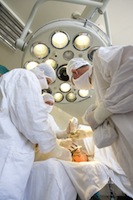
The group included in the study involved those who were enrolled in Medicare Part D. Studied individuals began hormone therapy within a year after surgery. The studied treatments included tamoxifen, anastrazole, letrozole and exemestane.

After the first year, there were some differences among demographics for continuing therapy. For those who were not in the program, only 55 percent of Hispanics and blacks continued with treatment, compared with 62 percent of whites. With the inclusion of the program, the rates rose to 71 percent for whites and Hispanics, and 67 percent for blacks.
This study is one of many that are focusing on the benefits of medical interventions across a variety of demographics, in line with recent trends to ensure equality for all demographics in the medical field.
Affordable care is one of many aspects necessary for patients to realize the world-class cancer care available in the United States. Doctors and hospitals must also provide treatment in line with the standard of care for cancer diagnosis and treatment.
